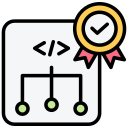Benefits of Low-Code Platforms for Beginners
Today’s chosen theme: Benefits of Low-Code Platforms for Beginners. Welcome to a friendly space where your first app idea can become real faster than you expect, with visuals that guide your steps and wins that build your confidence. Read on, try a tiny project, and tell us what you’ll build first!
Low-Code Lowers the Barrier to Entry
Visual development demystified
Drag-and-drop screens, visual data models, and flow builders help beginners see how an app fits together as they create it. Instead of memorizing syntax, you learn logic by doing. Try sketching a simple form today and share your first screens with our community.
First-week wins through rapid prototyping
Low-code platforms encourage tiny prototypes that work quickly, boosting motivation. A basic CRUD app can be ready in hours, not weeks. Those early wins matter. What simple workflow would save you time this week? Leave a comment, and we’ll suggest a starter template.
A gentler learning curve than traditional stacks
Skip environment setup, complex package managers, and boilerplate. Focus on business logic and user experience first. As your confidence grows, you can gradually explore advanced features. Subscribe for weekly beginner challenges designed to build skills step by step.
Real Stories, Fast Confidence
Mia worked retail and tracked stock by hand. Over one weekend, she built a low-code app with barcode scanning, alerts, and a simple dashboard. Monday’s count took half the time. What’s your version of Mia’s story? Tell us, and inspire another beginner today.
Real Stories, Fast Confidence
A high school teacher created a grading assistant that collected submissions, flagged missing work, and emailed summaries to parents. No advanced coding—just forms, rules, and templates. If you’re an educator, comment with your bottleneck, and we’ll share a blueprint.




Define a tiny, testable problem
Start with a single pain point and a measurable outcome, like reducing data entry time by thirty percent. Draft two success metrics, then build only what proves them. Share your goal in the comments, and we’ll help refine it into a crisp MVP scope.

Design with data first
Sketch your data objects and relationships before screens. Low-code makes this visual and concrete, reducing rework later. Validate fields and rules early. Post your data model diagram, and the community can suggest improvements rooted in real beginner experiences.

Test with real users, iterate quickly
Put your prototype in front of two users this week, gather feedback, and revise by Friday. Low-code speeds that loop dramatically. Want a feedback template? Subscribe, and we’ll send interview questions that uncover actionable insights without overwhelming testers.
Use role-based access, field-level permissions, and audit logs from day one. Many low-code tools offer templates aligned with common standards. Ask your platform’s admin center for recommended defaults. Share your security questions, and we’ll point to beginner-friendly guides.
Safety, Governance, and Good Habits
Choose platforms that export data, support standard APIs, and allow custom code extensions. Document decisions so future migrations are easier. Comment with tools you’re considering, and we’ll reply with a comparison checklist tailored to beginner priorities.
Safety, Governance, and Good Habits
Beyond the Basics: Growing with Low-Code
Add scripts or components when a visual block falls short—analytics, specialized UI, or heavy logic. Start small and keep changes isolated. Tell us where your prototype struggles, and we’ll suggest safe, incremental ways to add code without losing simplicity.
Beyond the Basics: Growing with Low-Code
Study data modeling, UX basics, and API principles to understand why low-code works. These fundamentals transfer to any stack. Want a curated learning path? Subscribe, and get a beginner-friendly syllabus mapped to common low-code features and workflows.

